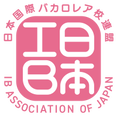Design
|
Design in middle school focuses on building the skills needed for success in the IB Diploma Program (IBDP). Design follows a carefully structured sequence of topics. The curriculum spirals; students get multiple exposures over the five years of their middle school experience, deepening and extending their understanding by revisiting the principles taught. The goal of Design is to challenge students to apply practical and creative thinking skills to solve design problems. Inquiry and problem-solving are at the heart of the subject.
The grade 6 to 10 Design program uses a criteria-referenced assessment framework and an inquiry-driven approach to the subject. The course emphasizes the Design Cycle as a tool, which provides the methodology used to structure the inquiry and analysis of problems. The development of feasible solutions. The creation and testing, and evaluation of solutions. |
Digital Literacy
To promote the use of technology and develop students digital literacy the following applications are used in Design:
- Google Classroom - students use Google Classroom to learn about formative and summative assessment tasks in detail, read teacher announcements, comment on questions posted and submit work for review.
- Weebly - students use a subject website to access information relevant to the course and maintain a digital portfolio and blog of their work.
- ManageBac - students use ManageBac to access information about units of inquiry, check deadlines, view grades and read termly reports.
- G Suite (formerly Google App for Education) - students use G Suite to communicate and collaborate, which includes tools like Gmail, Calendar, Docs, Slides, Forms and Drive.
Assessment
Each quarter, students complete several units of inquiry in design. Summative assessment tasks address the assessment criteria (A, B, C, and D), and learner outcomes adopted in this subject correspond to the stages of the Design Cycle (described above). The student work below provides an example of assessment tasks given in this subject.
A. Inquiring and Analyzing
To address this criteria, students created an animated presentation using ‘Powtoon’ to explain and justify their project ideas.
To address this criteria, students created an animated presentation using ‘Powtoon’ to explain and justify their project ideas.
B. Developing Ideas
To address this criteria, students developed a storyboard to illustrate their project ideas in more detail.
To address this criteria, students developed a storyboard to illustrate their project ideas in more detail.
C. Creating the Solution
To address this criteria, students produced a 3-5 minute stop-motion animation.
To address this criteria, students produced a 3-5 minute stop-motion animation.
D. Evaluating
To address this criteria, students produced a reflective vlog which included the following:
To address this criteria, students produced a reflective vlog which included the following:
- An introduction
- A description of the unit of inquiry
- A description of each summative assessment undertaken with reference the stages of the design cycle
- A description of the software programs used
- A summary of what was learned
- An explanation of how the solution could be improved
For privacy, this vlog could not be used or replaced by an audio file.
Updated Nov'22



